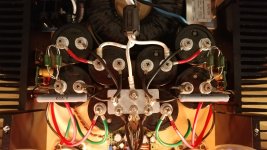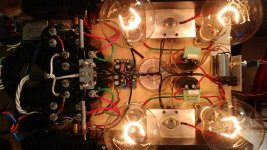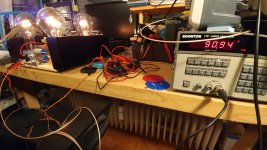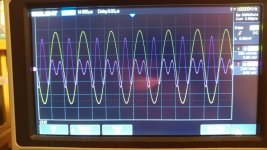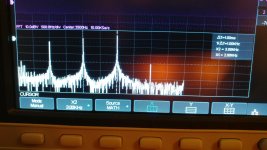The two wire links that join the rails were what I had on hand yesterday evening. I intend to use a copper bar or plate to replace them.
I'll also be using shielded RG316U cables for the input wiring.
I haven't done too many measurements yet, just a quick tuning of the sweetspot (~52VDC supply after reg, 2.3 A Id, 0.13% THD). So far so good.
I'll be pulling some numbers from the circuit over the weekend.
I've been listening to the amp though the HD800 for an hour this morning. In one word, euphonic.
I'll also be using shielded RG316U cables for the input wiring.
I haven't done too many measurements yet, just a quick tuning of the sweetspot (~52VDC supply after reg, 2.3 A Id, 0.13% THD). So far so good.
I'll be pulling some numbers from the circuit over the weekend.
I've been listening to the amp though the HD800 for an hour this morning. In one word, euphonic.
in this case he's safe , simply because each (of these two) cap is on single rail , each is having own separate ground feed and there is no current flow between them
in short - Lucky Bztrd

OK. I confess I didn't dare to check thoroughly the drawing
At the risk of being repetitive, I recommend to add later a good input section. That helps a lot with complex music, like big symphonic works.
As time allows, I promised myself to cascode (or bootstrap) the output, like I did with the ZCA AKA Zero Component Amp.
Best wishes,
M.
Good news, everyone!
I found the aluminum plate from the cutout for the switched IEC power inlet and am now using it to connect all the circuit grounds. And it works, beautifully! Not the slightest hum with a source and headphones connected.
I took some measurements with an input of 1V at 1kHz. Output (over 10R load) was 2.466V or 7.83dBV. Distortion was 0.16% (drops down to like 0.04% at headphone listening levels) and S/N ratio was just shy of 91dB. Not too bad I'd say.
Attached you'll also find a snapshot of the residual distortion signal (purple trace) and a simple FFT. H3 ia slightly dominant over H2, and H4 is already way down. I'll be playing with the sweet spot and the resulting spectrum over the coming weekend, should be fun.
I found the aluminum plate from the cutout for the switched IEC power inlet and am now using it to connect all the circuit grounds. And it works, beautifully! Not the slightest hum with a source and headphones connected.
I took some measurements with an input of 1V at 1kHz. Output (over 10R load) was 2.466V or 7.83dBV. Distortion was 0.16% (drops down to like 0.04% at headphone listening levels) and S/N ratio was just shy of 91dB. Not too bad I'd say.
Attached you'll also find a snapshot of the residual distortion signal (purple trace) and a simple FFT. H3 ia slightly dominant over H2, and H4 is already way down. I'll be playing with the sweet spot and the resulting spectrum over the coming weekend, should be fun.
Attachments
Oops i did it again
having time to spend as many here , i have rebuilt for the X times my Sitamp
exit hte big Tokin THF51s with CCS and Nemesis TANGO transformer version
and return to the simple Sony Vfet with 12,7 R load . 61V B+ ( 43V 1.45A for the VFET)
fixed bias with Cinemag input transformer. works perfectly as usual
but i wonder for those who have distorsion meters what will be the sweet spot
with my " higher" voltage than usual for resistor load Sony 2SK82 ?
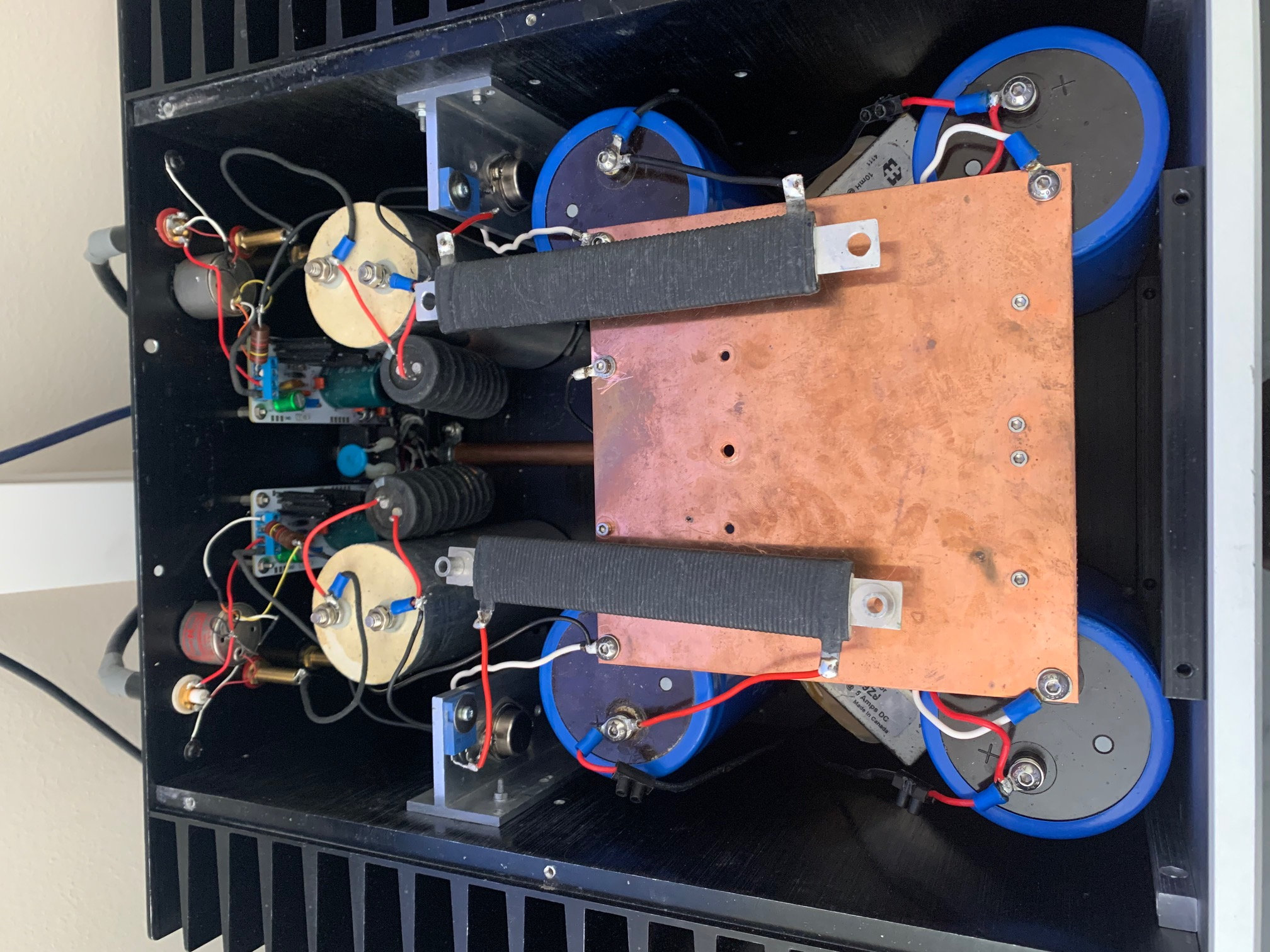
having time to spend as many here , i have rebuilt for the X times my Sitamp
exit hte big Tokin THF51s with CCS and Nemesis TANGO transformer version
and return to the simple Sony Vfet with 12,7 R load . 61V B+ ( 43V 1.45A for the VFET)
fixed bias with Cinemag input transformer. works perfectly as usual
but i wonder for those who have distorsion meters what will be the sweet spot
with my " higher" voltage than usual for resistor load Sony 2SK82 ?

Hi there,
I’m planning a built of the L’amp with the 2sk182es + hammond 193v. I’ve seen a video of mr Rothacher talking about the development of Soundhappy’s L’amp with the 2sk182es but have not found any info fallowing that. Is there anybody that have built the L’amp with the 2sk182es that could give me some info about the psu voltage for that configuration?
Merci !
Hubert
I’m planning a built of the L’amp with the 2sk182es + hammond 193v. I’ve seen a video of mr Rothacher talking about the development of Soundhappy’s L’amp with the 2sk182es but have not found any info fallowing that. Is there anybody that have built the L’amp with the 2sk182es that could give me some info about the psu voltage for that configuration?
Merci !
Hubert
It's was simplified version schematic with 2SK79 and 2SJ28 vfet's by Mr. MR
What To Do With Those 2SJ28's
link 2: What To Do With Those 2SJ28's
2SK182ES L'Amp version find in this video Lab Hangout #4 start at ~16min10s.
Oh yeah I am Mr. MR fan boy and ask more about less top secret stuff Joke
Joke
What To Do With Those 2SJ28's
link 2: What To Do With Those 2SJ28's
2SK182ES L'Amp version find in this video Lab Hangout #4 start at ~16min10s.
Oh yeah I am Mr. MR fan boy and ask more about less top secret stuff
Attachments
-
 2458F1FB-75BB-40D2-96FD-BB2276BCEDE4.JPG330.2 KB · Views: 114
2458F1FB-75BB-40D2-96FD-BB2276BCEDE4.JPG330.2 KB · Views: 114 -
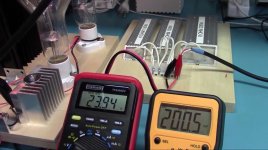 DF46C823-226D-423F-ADFB-A1912EF9D524.JPG364.1 KB · Views: 121
DF46C823-226D-423F-ADFB-A1912EF9D524.JPG364.1 KB · Views: 121 -
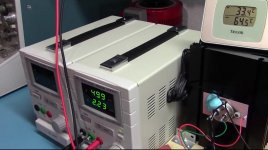 A2A13A0F-F1E1-4C20-8AA8-9CBF1774DE42.JPG307.8 KB · Views: 162
A2A13A0F-F1E1-4C20-8AA8-9CBF1774DE42.JPG307.8 KB · Views: 162 -
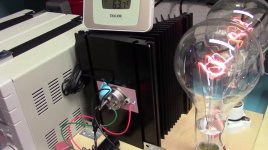 FC19A318-8292-4CD1-A45D-78F4284378DD.JPG347 KB · Views: 166
FC19A318-8292-4CD1-A45D-78F4284378DD.JPG347 KB · Views: 166 -
 4C08576D-7E3D-4098-9AB3-A6106D4CC80E.JPG269.2 KB · Views: 154
4C08576D-7E3D-4098-9AB3-A6106D4CC80E.JPG269.2 KB · Views: 154
Hi there,
I’m planning a built of the L’amp with the 2sk182es + hammond 193v..
I am not aware , probably no one has build L'Amp 2SK182ES with inductor load
Meantime this is instructive article :
http://blog.audiomaker.tech/pdf/lamp part deux.pdf
another about gate leakage and bias:
Fun With PASS-SIT-1 | AudioMaker
2SK182ES L'Amp version find in this video Lab Hangout #4 start at ~16min10s.
Yes that’s the video I was talking about, at 14min he talks about Soundhappy 2sk182 amp
Thank you Soundhappy for your answers and all the links it’s really appreciated!
Hubert
Yes that’s the video I was talking about, at 14min he talks about Soundhappy 2sk182 amp
Thank you Soundhappy for your answers and all the links it’s really appreciated!
Hubert
The game with Tokin is keep distortion as low as possible, even with CCS is not a champion.
Inductor load rise distortion a lot , limits ok with Sony Vfet but imho bit too much if 2SK182ES..
anyway You can try is a good time hobby
Regarding the big Tokin parts, I have relaxed my views somewhat on chasing really low distortion. With the Sony's I got some super low distortion numbers in zero feedback circuits, which spoiled me a bit. Of course, we also got very little gain. With the Tokins we get respectable gain and much greater power handling. So, there's a tradeoff to consider.
When you consider a typically respected 2A3 amp will give you maybe 3.5 Watts at 5% distortion, 30-50 Watts at 3% starts to look pretty good. And so, I'm viewing these more like really big 300B's these days with happy results, spending time listening as much as measuring. A matter of perspective.
The gate leakage can be an issue with some samples and it varies with temperature and Vds. If it doesn't wander too much you can address it at the DC source impedance of your bias circuit. I've also tried grid chokes and the like.
In other good news, I've moved to my new house. It's an oldie but goody built in 1939. I've carved out some space for a little lab and I'm just about ready to get back into the swing of things.
When you consider a typically respected 2A3 amp will give you maybe 3.5 Watts at 5% distortion, 30-50 Watts at 3% starts to look pretty good. And so, I'm viewing these more like really big 300B's these days with happy results, spending time listening as much as measuring. A matter of perspective.
The gate leakage can be an issue with some samples and it varies with temperature and Vds. If it doesn't wander too much you can address it at the DC source impedance of your bias circuit. I've also tried grid chokes and the like.
In other good news, I've moved to my new house. It's an oldie but goody built in 1939. I've carved out some space for a little lab and I'm just about ready to get back into the swing of things.
Regarding the big Tokin parts, I have relaxed my views somewhat on chasing really low distortion. With the Sony's I got some super low distortion numbers in zero feedback circuits, which spoiled me a bit. Of course, we also got very little gain. With the Tokins we get respectable gain and much greater power handling. So, there's a tradeoff to consider.
When you consider a typically respected 2A3 amp will give you maybe 3.5 Watts at 5% distortion, 30-50 Watts at 3% starts to look pretty good. And so, I'm viewing these more like really big 300B's these days with happy results, spending time listening as much as measuring. A matter of perspective.
The gate leakage can be an issue with some samples and it varies with temperature and Vds. If it doesn't wander too much you can address it at the DC source impedance of your bias circuit. I've also tried grid chokes and the like.
In other good news, I've moved to my new house. It's an oldie but goody built in 1939. I've carved out some space for a little lab and I'm just about ready to get back into the swing of things.
Thank you for your answer Mr. Rothacher,
My main questioning was about the voltage at which the 2sk182es perform the best in this circuit. I already have 4x 2sk182es and the first step in my planning is choosing between using a standard fw 24v psu that I already have in a L’amp 193v OR buying a new 40v+ transformer and some 300w bulb. I don’t have lab psu to experiment with so that’s why I’m asking. In your video you are testing at 50v 2.23a with 2 300w bulb I think is that right? Was that the optimal voltage for the 2sk182es in that circuit?
Thank you!
I didn't play with the 2SK182ES long enough to thoroughly answer that question. It was on loan. I'm also reticent about "optimal". There's more than one way to skin a cat, and SITs can work well in a variety of configurations.
The only big SIT I've spent any appreciable time with so far is the 2SK180.
Maybe when I get the lab fired back up I'll grab some of those other parts and play.
The only big SIT I've spent any appreciable time with so far is the 2SK180.
Maybe when I get the lab fired back up I'll grab some of those other parts and play.
I didn't play with the 2SK182ES long enough to thoroughly answer that question. It was on loan. I'm also reticent about "optimal". There's more than one way to skin a cat, and SITs can work well in a variety of configurations.
The only big SIT I've spent any appreciable time with so far is the 2SK180.
Maybe when I get the lab fired back up I'll grab some of those other parts and play.
Ok thank you for your answer!
Hubert
I have some knowledge of 182es. Try 35v drain and 1,1 amps. This is only my data. Be free to try your own specs.
Great thank you! That was with the light bulb version?
Great thank you! That was with the light bulb version?
No, CCS version and i use source resistor because otherwise bias was all over the place. Have fun.

I have a question about inrush current.
I have been using choke version of L'amp (self biased), but every time it is powered up, I see the current meter goes up to 5A for a very short period. No speaker thump.
It has been this way for 2+ years, so I think it's probably not harmful, but I always wonder if any way to avoid this inrush current. I currently use 24V SMPS. If a thermistor would help, where I should put it?
Thank you.
I have been using choke version of L'amp (self biased), but every time it is powered up, I see the current meter goes up to 5A for a very short period. No speaker thump.
It has been this way for 2+ years, so I think it's probably not harmful, but I always wonder if any way to avoid this inrush current. I currently use 24V SMPS. If a thermistor would help, where I should put it?
Thank you.
Last edited:
- Home
- Amplifiers
- Pass Labs
- L'Amp: A simple SIT Amp
